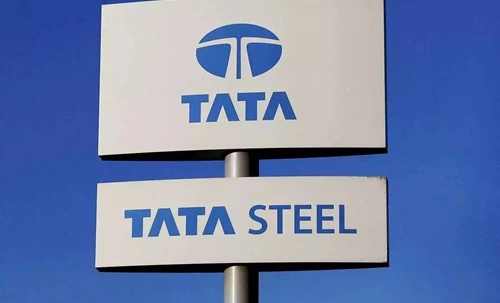Tata Steel, part of the Tata Group, is one of the world’s largest steel producers and a key player in the global steel industry. Founded in 1907, Tata Steel has grown from a regional supplier to a global steel giant with operations in over 20 countries, including India, Europe, and Southeast Asia. Known for its commitment to quality, innovation, and sustainable practices, Tata Steel faces both opportunities and challenges in a rapidly evolving industry. This SWOT (Strengths, Weaknesses, Opportunities, Threats) analysis of Tata Steel explores its current market position and provides insights into the future outlook.

Strengths
1. Strong Brand Legacy and Market Position:
Tata Steel’s reputation for quality, ethics, and reliability has made it a trusted brand in the steel industry. It is one of the leading steel producers in India and has a strong presence in Europe, especially after acquiring Corus (now Tata Steel Europe) in 2007. This acquisition enabled Tata Steel to expand its geographical footprint and solidify its position as a global player.
2. Vertically Integrated Operations:
One of Tata Steel’s key advantages is its vertically integrated operations, which span mining, processing, manufacturing, and distribution. Tata Steel has captive iron ore and coal mines, reducing its dependence on external suppliers for raw materials and providing a cost advantage. This vertical integration ensures a steady supply of raw materials and allows better control over production costs, enhancing the company’s profitability.
3. Focus on Innovation and Technology:
Tata Steel has a strong focus on innovation and has invested heavily in advanced steelmaking technologies. The company’s Research and Development (R&D) centers work on developing high-strength, lightweight, and corrosion-resistant steel products that cater to sectors like automotive, construction, and infrastructure. Tata Steel’s advanced products, like the Tata Astrum for heavy engineering and Tata Steelium for auto and home appliances, demonstrate its commitment to technological leadership.
4. Commitment to Sustainability:
Tata Steel is a leader in sustainability within the steel industry. It has made significant progress in reducing its carbon footprint, waste recycling, and water conservation. The company’s sustainability efforts align with global trends towards greener and more environmentally responsible manufacturing. Tata Steel’s Jamshedpur plant, for instance, is known for its high levels of energy efficiency and low carbon emissions, setting a benchmark for green steel production.
Weaknesses
1. High Debt Levels:
Tata Steel has incurred substantial debt due to past acquisitions and capital-intensive projects. The acquisition of Corus, while strategic, increased the company’s debt burden significantly, and the European operations have struggled to generate consistent profitability. High debt levels limit Tata Steel’s financial flexibility, particularly in volatile market conditions, and put pressure on its cash flows.
2. Dependency on Cyclical Steel Industry:
The steel industry is highly cyclical, with prices and demand fluctuating based on economic conditions. Tata Steel’s profitability is heavily influenced by global steel prices, which are affected by factors such as overcapacity, demand fluctuations, and raw material costs. The cyclical nature of the industry makes Tata Steel vulnerable to economic downturns and trade tensions that can impact its revenue and profitability.
3. Ongoing Challenges in European Operations:
Tata Steel’s European operations, particularly in the U.K. and the Netherlands, have struggled with profitability due to high production costs, lower demand, and regulatory challenges. Efforts to streamline and improve operational efficiency have been met with limited success, and these units remain a financial drag on the company. Tata Steel’s European operations are also exposed to labor and environmental regulations that impact operating costs.
4. Complex Organizational Structure:
With operations across multiple countries, Tata Steel’s complex organizational structure can lead to inefficiencies in decision-making and increased administrative costs. Managing a global workforce, multiple plants, and various product lines requires strong coordination, which can be challenging, especially during economic downturns or restructuring efforts. Streamlining operations could help Tata Steel enhance its agility and reduce costs.
Opportunities
1. Expansion in the Indian Infrastructure Sector:
India’s infrastructure sector is poised for significant growth, driven by government initiatives like Make in India, Smart Cities Mission, and the National Infrastructure Pipeline (NIP). These projects require large amounts of steel, presenting Tata Steel with a substantial growth opportunity in its home market. As a leading player in India’s steel sector, Tata Steel is well-positioned to benefit from increased demand for steel in construction, infrastructure, and urban development.
2. Rising Demand for High-Strength and Specialty Steel:
The automotive and aerospace industries are increasingly demanding high-strength, lightweight, and specialty steel products to improve fuel efficiency and safety. Tata Steel has already made strides in this area with products like Tata Steelium and Tata Astrum, which cater to the needs of the automotive and engineering industries. Expanding its specialty steel product portfolio could help Tata Steel capture market share in high-growth industries like electric vehicles (EVs) and green energy infrastructure.
3. Focus on Green Steel and Decarbonization:
As the steel industry faces pressure to reduce carbon emissions, Tata Steel has the opportunity to position itself as a leader in green steel production. With its existing sustainability initiatives, Tata Steel can capitalize on the demand for eco-friendly steel from environmentally conscious companies. The development of low-carbon technologies, such as hydrogen-based steelmaking, could give Tata Steel a competitive advantage and enhance its appeal to customers seeking sustainable products.
4. Increasing Global Demand for Steel in Emerging Markets:
Emerging markets in Southeast Asia, Africa, and the Middle East are experiencing rapid industrialization and infrastructure development, driving demand for steel. Tata Steel, with its established brand and diversified product portfolio, has the opportunity to expand its presence in these markets. By increasing exports to emerging economies, Tata Steel can reduce its dependency on mature and highly competitive markets like Europe.
Threats
1. Intense Competition from Global Steelmakers:
The global steel industry is highly competitive, with major players like ArcelorMittal, Nippon Steel, and POSCO competing for market share. These companies have significant financial resources and production capabilities, allowing them to offer competitive prices and capture a larger share of the market. Intense competition exerts pricing pressure on Tata Steel, which could impact its profitability if not managed effectively.
2. Fluctuations in Raw Material Prices:
Tata Steel relies heavily on raw materials like iron ore and coal, the prices of which are volatile and subject to global supply-demand dynamics. While Tata Steel’s captive mines provide some insulation, any significant price increase in raw materials could raise production costs and impact profitability. The recent global commodity price surges, driven by supply chain disruptions, highlight the vulnerability of steelmakers to fluctuations in raw material costs.
3. Environmental Regulations and Carbon Emission Targets:
The steel industry is one of the largest emitters of CO₂, and global regulators are increasingly implementing stricter environmental standards. Tata Steel’s European operations, in particular, face stringent carbon emission regulations, which increase compliance costs. As governments worldwide set ambitious carbon targets, Tata Steel will need to accelerate its decarbonization efforts, which may require substantial investment in green technology and innovation.
4. Trade Tariffs and Geopolitical Uncertainty:
Trade tensions and tariffs, particularly those affecting steel imports and exports, pose a significant threat to Tata Steel’s international operations. For example, the U.S. has imposed tariffs on steel imports, and Brexit has introduced uncertainty in the European Union and U.K. markets. Geopolitical risks and protectionist policies can disrupt Tata Steel’s global supply chains, affecting its ability to operate efficiently in certain regions.
Future Outlook
The future outlook for Tata Steel is shaped by a mix of challenges and growth opportunities. As India’s infrastructure sector expands, Tata Steel is well-positioned to capture a growing demand for steel, particularly in the domestic market. The government’s emphasis on urbanization and manufacturing also bodes well for Tata Steel’s long-term growth prospects, as these sectors are among the largest consumers of steel.
Tata Steel’s focus on innovation and specialty products aligns with the rising demand for high-strength, lightweight, and corrosion-resistant steel in sectors like automotive, aerospace, and renewable energy. By diversifying its product portfolio and expanding its specialty steel offerings, Tata Steel can establish itself as a preferred supplier for high-growth industries, enhancing its revenue potential.
However, Tata Steel’s high debt levels and ongoing challenges in its European operations need urgent attention. Reducing its debt burden and improving operational efficiency in Europe will be critical to sustaining long-term financial health. The company’s commitment to green steel and decarbonization efforts could provide a competitive edge, but achieving ambitious carbon reduction goals will require significant investment.
Tata Steel’s international expansion into emerging markets offers additional growth potential. With increased demand for steel in countries like Vietnam, Indonesia, and the UAE, Tata Steel can capitalize on its brand strength and quality standards to capture market share. Expanding into these regions could also reduce Tata Steel’s exposure to mature and competitive markets like Europe.
In conclusion, Tata Steel’s strengths in brand legacy, vertical integration, and sustainability provide a robust foundation for growth. By addressing its weaknesses, such as debt and regional challenges, and seizing opportunities in green steel, infrastructure, and emerging markets, Tata Steel can continue to thrive as a global steel leader. The company’s adaptability to market changes and commitment to sustainable growth will be key in navigating the future of the global steel industry.

